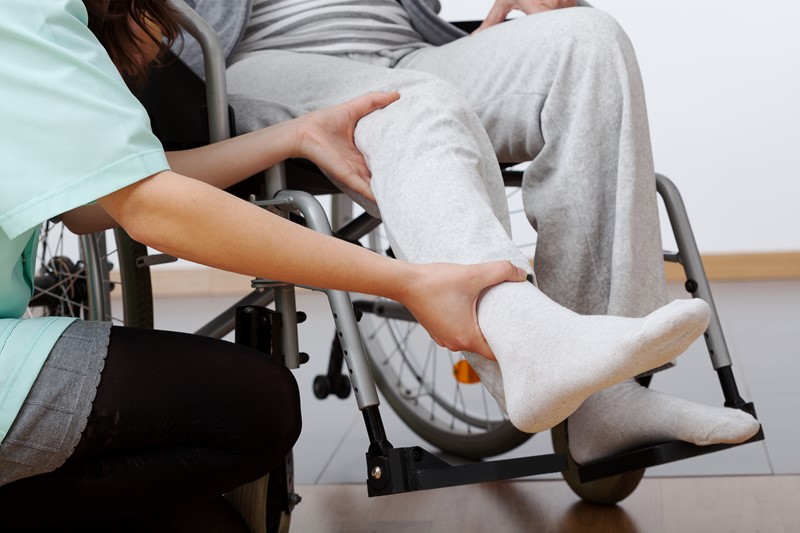Healthcare costs are skyrocketing, and there are multiple factors involved, these include, an aging population and a growing number of people with chronic diseases. Healthcare organisations need to provide care for higher numbers of patients who require more intensive and expensive interventions. In the United States, six in ten adults have a chronic disease, and four in ten adults have two or more. The major chronic disease categories are heart disease, cancer and diabetes, and these illnesses are the leading causes of death and disability in the U.S., and a significant contributor to the annual healthcare spend of $3.3 trillion.
Containing healthcare expenditure
Healthcare organisations are looking at ways to contain the growing expenditure, without jeopardising health outcomes, and getting increasing involvement and engagement from their patients in their care. Providers are looking for ways to move healthcare services out of the walls of the hospital and into the community and the patient’s home. One of these strategies is through the adoption of remote patient monitoring (RPM) services. RPM is the delivery of healthcare through mobile devices such as home-based patient monitoring devices, mobile phone, tablets and home computers.
Improving patient engagement
In the 2018 KLAS research report, KLAS describes RPM as a tactical innovation to help provider organisations manage home-based care. RPM solutions use in-home monitoring devices to record vital signs and to monitor an individual’s care plan, and if there are any irregularities, RPM provides the ability to alert caregivers. The report highlighted two primary use cases, heart disease and chronic respiratory disease. The report noted that a quarter of the healthcare organisations saw a reduction in emergency room visits, hospital readmissions and fewer inpatient admissions. The KLAS report commented on the improvement seen by organisations with an individual’s medication compliance and blood glucose monitoring. Plus, the overall result of improved patient satisfaction.
Many healthcare providers have seen improved outcomes when individuals are proactively involved in their care. Engaged patients adhere to treatment and care plans, take medications as they are prescribed and have regular contact with their care providers. Healthcare providers are using remote patient monitoring to improve patient engagement and better manage chronic diseases.
RPM in action
A poster presented at the 2018 e-Health, Canada’s National Conference called the Evaluation of a Telehomecare Initiative Used in Women with Gestational Diabetes discusses how RPM was utilised in the monitoring of women with gestational diabetes mellitus (GDM). These women and their babies are at risk of developing complications and require close attention from their care team which entails regular hospital appointments. The study aimed of the study was to evaluate the performance of telehomecare in the clinical effectiveness, pregnancy outcomes as well as the patient’s empowerment and satisfaction in care. The primary outcome was decreasing the medical visits in clinics and the emergency room for women with GDM at the University of Montreal Health Centre in Quebec, Canada.
In the evaluation, pregnant women with GDM were either assigned to the control group of usual care or an intervention group, and they were provided with a telehomecare system. This system was the Orion Health Remote Patient Management solution which provides for the communication and online analysis of blood glucose data. Patients had access to an electronic tablet or a web portal via their personal device. Each patient registered their daily health activities as outlined by their care plan. Feedback was provided to the patients by the RPM solution to promote improved health behaviours. Clinicians were alerted, based on predetermined algorithms and adjusted therapy on the symptoms and blood glucose results entered by the patients.
At the end of the evaluation, the author concluded that telehomecare monitoring significantly decreased medical visits, without compromising pregnancy outcomes, quality of care and patients’ satisfaction in women with GDM. Plus telehomecare monitoring reduced the total direct cost for healthcare associated with the management of GDM compared to the standard care.
The RPM solution reduced the cost of monitoring GDM patients, and it also improved the patients’ engagement with their care, and the satisfaction in the care they received. The women could enter their blood glucose results via the RPM solution, and they did not have to travel into the hospital for weekly appointments saving them both the time and expense of travel. This evaluation highlights the effectiveness of RPM solutions in improving patient engagement with their provider organisation and ultimately taking an active role in their own care.
The Orion Health Remote Patient Management solution enables care providers to tailor a personalised monitoring plan for individual patients by offering a complete set of tools and data connections to power effective virtual care across multiple settings, enabling effective remote care of patients in the community.



